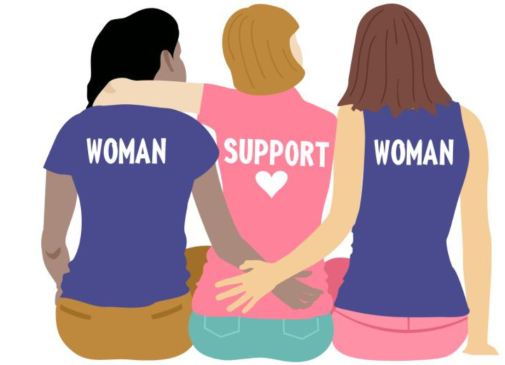
Despite the fact that close to one-third of all women and 50 percent of women over the age of 50 are currently affected by pelvic floor muscle dysfunction (PFMD), people are given very little information about this common disorder. Both men and women can be affected by this condition and many people experience pelvic floor muscle dysfunction after giving birth.
Unfortunately, many women don’t receive the correct information about being proactive or how to treat PFMD. Thankfully, social media has become a catalyst of helpful information about effective therapies and exercises you can try to help your pelvic floor dysfunction symptoms by strengthening specific muscles.
What Is Pelvic Floor Dysfunction?
First of all, it’s important to understand how the pelvic floor works. A woman’s pelvic floor is a grouping of muscles in the pelvic region that form a “sling” which supports various organs. These organs include the:
- Uterus
- Bladder
- Colon
- Rectum
The most important jobs of the pelvic floor is to regulate the release of urine, feces, gas, etc., as well as sexual function. When these muscles fail to work they may cause sexual dysfunction or incontinence – this is known as pelvic floor muscle dysfunction. Despite how crucial these muscles are in your daily life, little knowledge is given to people on what causes them to fail in the first place.
What Causes Pelvic Floor Dysfunction?
Anyone can develop pelvic floor muscle dysfunction, which is why education is key. Unfortunately, very few causes of pelvic floor dysfunction are lifestyle choices; therefore, it’s important to be proactive about treatment. Pelvic floor dysfunction causes include:
- Pregnancy and labor (especially after multiple births)
- Traumatic injuries to the pelvic area
- Overusing or exerting the pelvic muscles
- Pelvic surgery
- Advancing age
- Being overweight
- Family history of pelvic floor muscle dysfunction
Uterine fibroids (especially if they are large in size) Thankfully, there are many therapies, treatments, and exercises you can try once you’ve been diagnosed with pelvic floor muscle dysfunction. The longer your symptoms are left untreated, the more serious your pelvic floor dysfunction symptoms will be.
Can Fibroids Cause Pelvic Pain and Dysfunction?
Uterine fibroids, benign tumors located within the uterus, affect close to 70% to 80% of women before the age of 50. Similar to pelvic floor muscle dysfunction, little to no education is offered to women about symptoms and treatment.
Although most fibroids go undetected and are smaller than the size of a pea, some can grow as large as a lemon causing uncomfortable symptoms. Additionally, large fibroids often cause the uterus to be extended, putting pressure on surrounding organs such as the bladder, colon, intestines, and rectum. There are two types of fibroids, subserosal and submucosal, that could potentially cause pelvic floor muscle dysfunction:
Subserosal: Fibroids that grow within the uterine lining but project outside of the uterus
Submucosal: Fibroids that grow within the uterine lining but project inside the uterus
When fibroids grow larger, they often put pressure and weight on the abdominal area which could cause pelvic floor muscle dysfunction. Women with large fibroids often report symptoms such as:
- Frequent urination
- Pelvic pain or severe cramps
- Heavy periods lasting more than 10 days per month
- Bleeding between cycles
- Anemia, causing fatigue
- Constipation or bloating
- Abdominal fullness or pressure
- A protruding abdomen resembling pregnancy
- Pain during sex
Tumors in the pelvic area can negatively impact organs and muscles in that region. Consequently, if the fibroids grow too large, your pelvic floor can be put under immense stress. Over time, this stress can contribute to those “sling” muscles weakening and leading to pelvic floor muscle dysfunction.
What Are Some Pelvic Floor Dysfunction Symptoms?
Interestingly, both uterine fibroids and pelvic floor muscle dysfunction often share similar symptoms such as:
- Frequent urination
- Constipation or bloating
- Lower back or abdominal pain
- Pelvic pain and cramping
These conditions share similar symptoms because they both affect surrounding organs. It’s important to track any symptoms you may be experiencing so you can accurately tell your doctor what you are going through.
How Are Fibroids and Pelvic Dysfunctions Diagnosed?
Uterine fibroids and pelvic floor muscle dysfunction are often diagnosed during a routine pelvic or vaginal exam. However, there are a few other tests your doctor may conduct if you’re experiencing pelvic floor dysfunction symptoms, these include:
- Intrarectal or vaginal exam
- Surface electrodes placed on the perineum
- Anorectal manometry
- Uroflow test
- Defecating proctogram and live x-ray
These tests all measure how well your pelvic floor muscles are working. In comparison, doctors use imaging tools to diagnose fibroids such as:
- Magnetic resonance imaging (MRI)
- Ultrasound
If you’re experiencing symptoms, don’t wait for them to worsen. Getting diagnosed is the first step to treating uncomfortable fibroid and pelvic floor dysfunction symptoms so you can lead a healthy, active life.
Fibroids and Pelvic Floor Dysfunction Treatment
Depending on the causes and severity of your pelvic floor muscle dysfunction, different treatment may be recommended. Common pelvic floor dysfunction treatments include:
- Physical therapy utilizing strengthening exercises and techniques
- Medications
- Relaxation tools
- Biofeedback and muscle coordination
In some cases, treating your large uterine fibroids may improve pelvic floor muscle dysfunction. By eliminating your fibroids through surgical or nonsurgical methods, you will alleviate the pressure that is being placed on your pelvic muscles. Then, doctors can use therapy to strengthen them further. Treatments for uterine fibroids include:
- Nonsurgical Uterine Fibroid Embolization (UFE) or Uterine Artery Embolization (UAE)
- Invasive surgeries like hysterectomy or myomectomy
- Laparoscopic procedures
- Hormone medications
- Endometrial ablation
If you want to opt for an effective, nonsurgical solution Uterine Fibroid Embolization may be a good choice for you. UFE treats tumors in the pelvic area by blocking blood flow that is supplying the fibroid(s) with oxygen and nutrients. If the fibroid doesn’t get these nutrients, it will slowly die and become absorbed by the body. Without the fibroids putting pressure on your body, you will be able to strengthen those “sling” muscles which can help alleviate pelvic floor dysfunction symptoms.
If you want to learn more about uterine fibroids, pelvic floor muscle dysfunction, or other women’s health conditions, The Fibroid Foundation can help. We provide women with the information they need to make an informed decision about their health. Then, we help them find a treatment facility that can answer their questions about diagnosis and treatment. Give us a call at 855.455.5262 or contact us online.







